PET-CT Scan
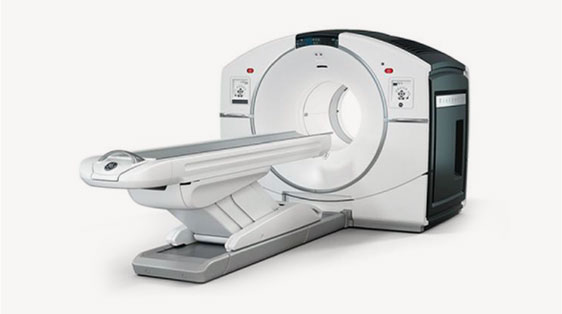
What is a PET CT Scan?
A PET-CT scan combines two state-of-the-art imaging technologies: PET (Positron Emission Tomography)- a nuclear medicine exam and CT (Computerized Tomography)- an X-ray exam into a single scan.
PET CT Scan is widely useful in diagnosing and staging cancer, heart disease and neurological disorders. A PET CT scan merges both technologies to quickly provide a high-quality image of both body form and function.
Whole Body Scan
PET scan is a nuclear medicine technique, which produces images of the human body’s function at a molecular level. Usually, it is a whole-body scan or regional scan, e.g. brain, or cardiac scan. PET CT Scan machine uses radiopharmaceuticals or “radiotracers” which are labelled with isotopes, e.g. Fluorine.
These radioisotopes act like molecular probes which seek out disease in the body while giving signals which are captured to produce an image while scanning under a PET-CT scanner. PET can thus often reveal much more about the cellular level dynamics of disease than any other modalities like ultrasound, CT or MRI.
- TUMOR IMAGING
- INFECTION IMAGING
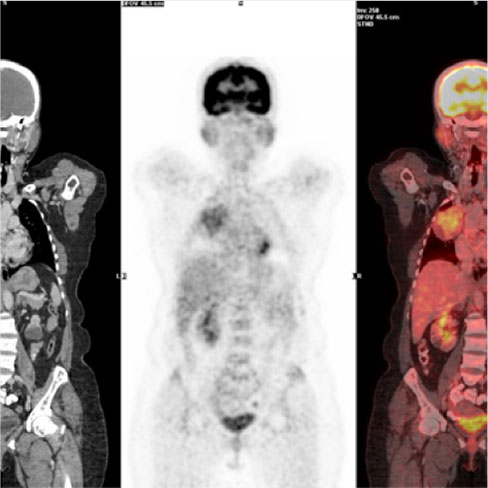
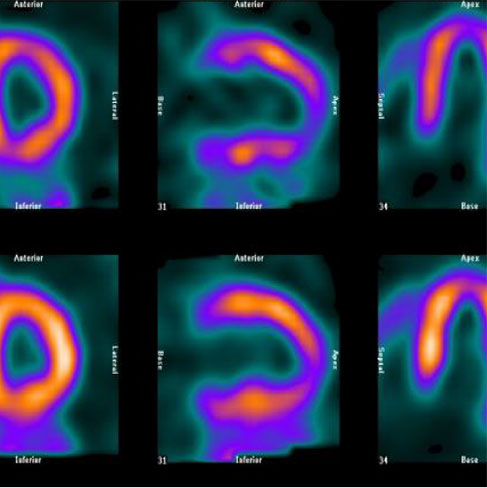
PET CT Cardiac Scan
A Cardiac PET scan is noninvasive imaging of the heart by injecting a radiotracer into the peripheral vein. A cardiac PET scan is useful for the assessment of viable myocardium in ischemic cardiomyopathy which guides interventional and/or surgical coronary revascularization procedures. There is a unique role of PET/CT imaging for the detection of cardiac infection/inflammation e.g. sarcoid involvement and the monitoring of its response to appropriate immunosuppressive treatment.
- MYOCARDIAL VIABILITY
- INFECTION (SARCOIDOSIS)
(Rest MPI + 18F-FDG Cardiac PET)
PET Brain Scan
A PET brain scan is non-invasive imaging of the brain by injecting radiotracer into the peripheral vein. Brain PET is useful for early diagnosis of neurodegenerative disorders (e.g. Alzheimer’s disease), movement disorders (e.g. Progressive supranuclear palsy), imaging neuroinflammation and looking for epileptogenic focus.
- TUMOR IMAGING
- DEMENTIA
- INTERICTAL PET-EPILEPSY
- MOVEMENT DISORDER
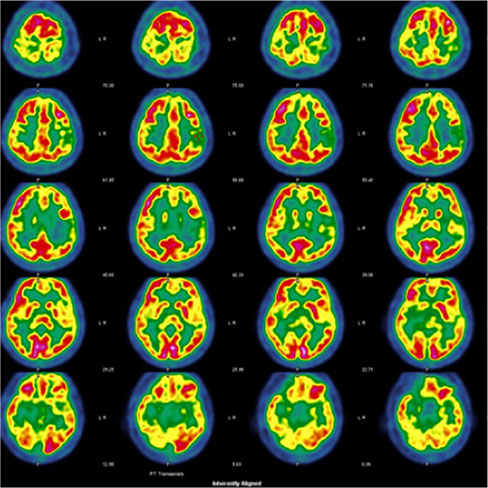
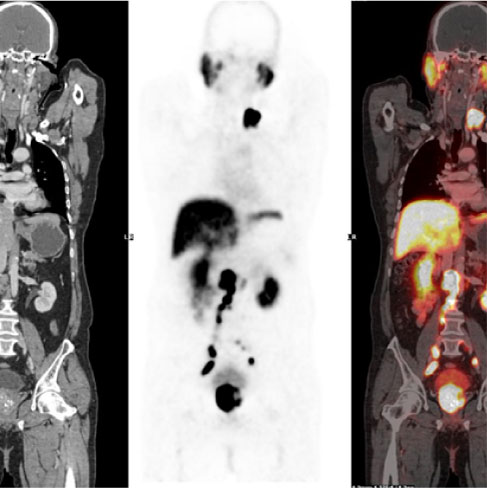
Prostate PET CT Scan
PSMA (Prostate-Specific Membrane Antigen) is a membrane glycoprotein that is an over-expressed manifold in prostate cancers and the expression increases with tumour aggressiveness, androgen independence, metastatic disease and disease recurrence.
PSMA PET Scan for prostate cancer is a prostate cancer-specific target diagnostic scan that provides both better sensitivity & high specificity at diagnosis for disease site localisation & improves detection at an earlier time point than with anatomical imaging techniques even at low PSA levels.

PET-CT Services Preparations & Procedures
When is PET-CT recommended?
PET-CT can help physicians detect, diagnose and evaluate treatment for diseases such as cancer, heart attack and neurological disorders. Rapid, more accurate imaging improves the ability to find and treat problems early on, when treatment can be most effective.
PET-CT scan can be done in
- Detecting and staging of various cancers.
- Determine blood flow and viability of heart muscle.
- Evaluate brain abnormalities, such as tumours, memory disorders and seizures and other central nervous system disorders.
- Assessment of treatment response and follow up.
- In research and new drug development.
Preparation before the PET-CT procedure.
Blood test: S. Creatinine report done no later than two weeks before.
Diet Instructions-
24 Hours Prior to Your Appointment:
- Consume protein-rich diet i.e., Milk, Non-starchy vegetables, Paneer, Eggs, Zero calorie beverages.
- Drink water to stay hydrated.
- Avoid intake of bread, pastry, cereal, potatoes, pasta, rice, soy products.
- Avoid Fruit (no tomatoes), desserts, cakes, flavoured yoghurt.
- Avoid soft drinks, juices, beer, alcoholic beverages.
- Avoid vitamins, strenuous exercise, caffeine or tobacco products
6-8 Hours Prior to Your Appointment:
- Nothing to eat or drink (except water) after midnight.
- No other liquids or caffeine’s should be taken.
- All necessary medications may be taken with water.
- If you are diabetic, ask your doctor about diet and medication, including withholding insulin for 4 hours prior to the exam (with the exception of an insulin pump, which is permitted). Carefully monitor and control your blood sugar for 48 hours before the scan.
- Insulin should not be taken within 4 hours of your appointment time.
Day of Appointment:
- You are advised to drink plenty of water before the exam. Intake of any other liquid is discouraged – it may adversely affect exam quality.
- Our staff will check your blood sugar & Creatinine when you arrive for your scan. If your blood sugar or Creatinine is high, a technologist will review your history and may advise rescheduling your scan.
- The PET-CT room is maintained at a low temperature. Please wear warm clothing, and do not carry any metal object.
- You may wear your hearing aid, glasses and dentures to your appointment.
- Carry all your previous reports & scans i.e.:- CT, MRI, Biopsy, Sonography, Indoor patient file, etc.
What happens during the scan?
The FDG Tracer
- To begin your scan, the technologist will inject a safe, low dose of short-lived Positron-Emitting isotope of a glucose compound (FDG or F-18 Fluorodeoxyglucose) into a vein in your arm. You will then be directed to sit in the waiting room while the FDG tracer disperses throughout your body.
- This process usually takes about 60 minutes.
Scanning
- Your technologist will then bring you into the PET-CT scan room where you will lie down on the imagining table. The technologist will position the part of your body to be scanned.
- The PET-CT scanner does not touch you, nor do you feel anything. The technologist leaves the room but can see you at all times from the observation window in the adjoining room. In order to position you correctly for the scanner, you will feel the patient table move slightly 5 to 6 times during the scan. It is important for you to lie as still as possible.
Care after the PET-CT procedure.
- You may resume your normal diet and activities immediately following your procedure. All traces of radioactive glucose leave your system over the course of a day.
- Drinking plenty of water will help you flush your systems more quickly.
